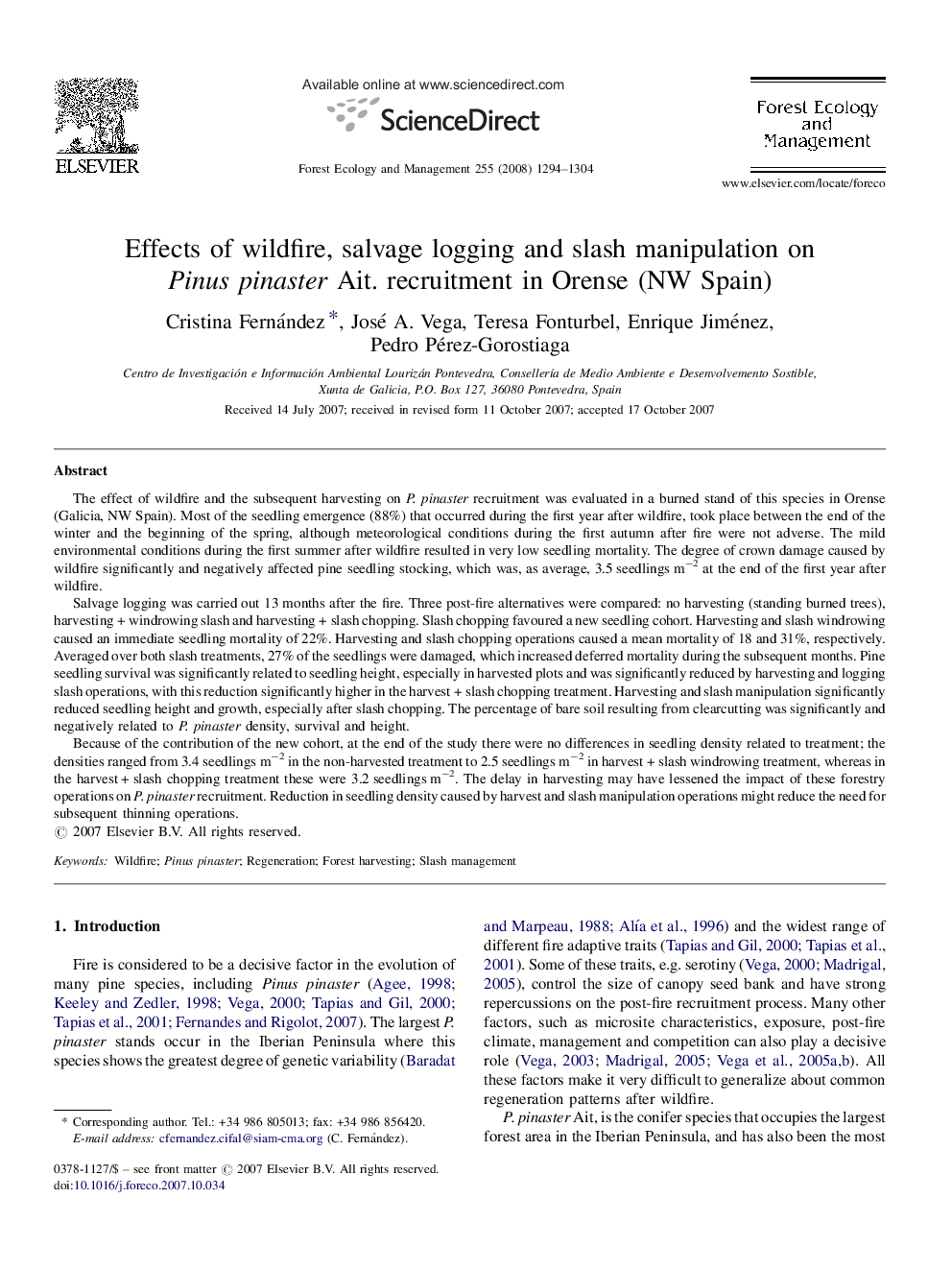| Article ID | Journal | Published Year | Pages | File Type |
|---|---|---|---|---|
| 89908 | Forest Ecology and Management | 2008 | 11 Pages |
The effect of wildfire and the subsequent harvesting on P. pinaster recruitment was evaluated in a burned stand of this species in Orense (Galicia, NW Spain). Most of the seedling emergence (88%) that occurred during the first year after wildfire, took place between the end of the winter and the beginning of the spring, although meteorological conditions during the first autumn after fire were not adverse. The mild environmental conditions during the first summer after wildfire resulted in very low seedling mortality. The degree of crown damage caused by wildfire significantly and negatively affected pine seedling stocking, which was, as average, 3.5 seedlings m−2 at the end of the first year after wildfire.Salvage logging was carried out 13 months after the fire. Three post-fire alternatives were compared: no harvesting (standing burned trees), harvesting + windrowing slash and harvesting + slash chopping. Slash chopping favoured a new seedling cohort. Harvesting and slash windrowing caused an immediate seedling mortality of 22%. Harvesting and slash chopping operations caused a mean mortality of 18 and 31%, respectively. Averaged over both slash treatments, 27% of the seedlings were damaged, which increased deferred mortality during the subsequent months. Pine seedling survival was significantly related to seedling height, especially in harvested plots and was significantly reduced by harvesting and logging slash operations, with this reduction significantly higher in the harvest + slash chopping treatment. Harvesting and slash manipulation significantly reduced seedling height and growth, especially after slash chopping. The percentage of bare soil resulting from clearcutting was significantly and negatively related to P. pinaster density, survival and height.Because of the contribution of the new cohort, at the end of the study there were no differences in seedling density related to treatment; the densities ranged from 3.4 seedlings m−2 in the non-harvested treatment to 2.5 seedlings m−2 in harvest + slash windrowing treatment, whereas in the harvest + slash chopping treatment these were 3.2 seedlings m−2. The delay in harvesting may have lessened the impact of these forestry operations on P. pinaster recruitment. Reduction in seedling density caused by harvest and slash manipulation operations might reduce the need for subsequent thinning operations.
